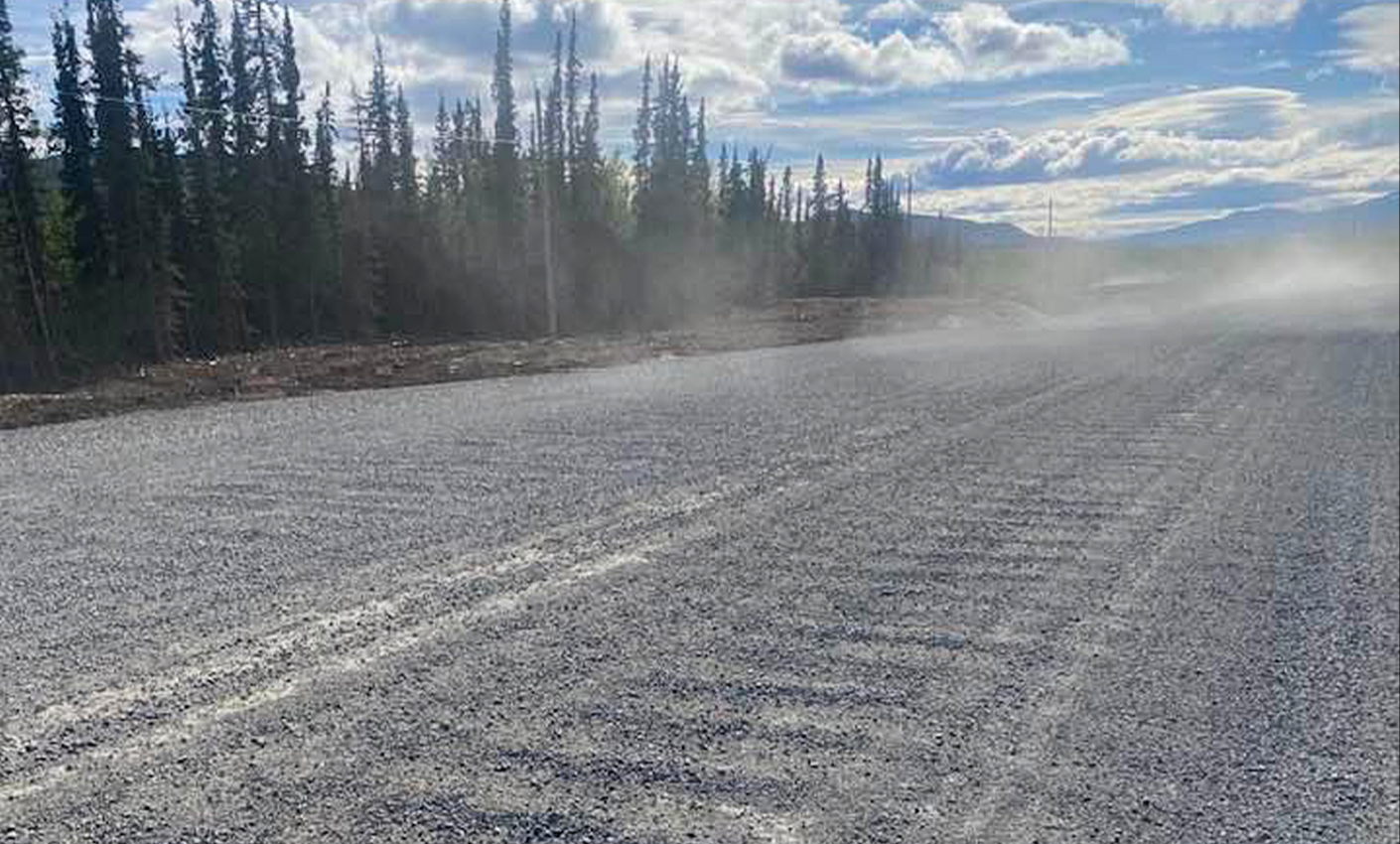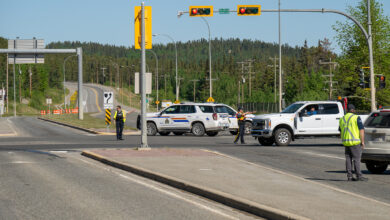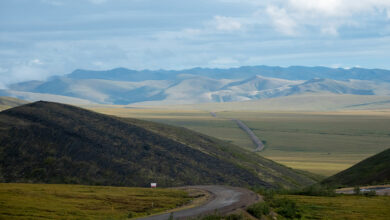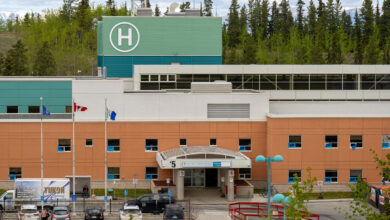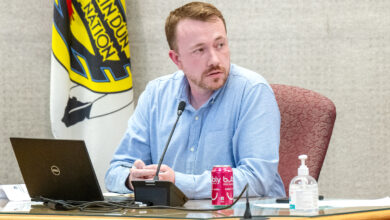“Citizens report broken windshields, people disregarding the posted speed limit, resulting in dust clouds blocking vision in front of vehicles, slippery conditions when it rains, huge drop-offs from the road, and loose gravel causing unsafe driving conditions.
“As the road gets busier, gravel slips off the road, worsening the situation.”
That’s how the Yukon Party is describing conditions on parts of the Alaska Highway west of Whitehorse.
Two MLAs are asking Highways and Public Works Minister Nils Clarke to put a priority on fixing sections of the Alaska Highway between Haines Junction and Whitehorse.
“The seasonal work to improve culverts and road drainage has not been completed with a proper paved road surface before winter because contracts to upgrade the road and apply Bituminous Surface Treatment (BST) are tendered late,” the Yukon Party said Tuesday. “This has been an ongoing problem for years.”
Kluane MLA Wade Istchenko and Lake Laberge MLA Brad Cathers have heard from constituents and regular travellers of the highway.
Istchenko wrote to Clarke in June 2023 to express concern about the gravel patches, especially at kilometre 1455. The minister indicated that a contract was expected to be awarded shortly, with work completed in September.
“Unfortunately, that did not happen,” the official Opposition said.
“Yukoners have been driving on these gravel patches since 2017 because the Liberals have not delivered on their promise to tender seasonally dependent contracts by March,” Istchenko added.
“These contracts should be prioritized for tendering early in the year to ensure they are completed during the construction season. This dangerous section of road is heavily used by not only constituents and tourists, but emergency vehicles as well, and is an accident waiting to happen.”
In a letter sent to Clarke on Tuesday, both MLAs noted the gravel section at KM 1455 where the highway was relocated last year to avoid slumping permafrost by the Takhini River has now caused permafrost slumping in the right-of-way and on private property south of the highway.
“We would like the minister to confirm that his department will take action to fix the Alaska Highway between Haines Junction and Whitehorse this summer, and to have
the surface of the gravel sections resurfaced with BST promptly,” said Cathers.
“We would also like him to indicate what actions will be taken to mitigate and respond to the slumping permafrost resulting from the highway project done last summer, including how the government will work with the owners of the affected farm.”
YG must ensure the section between Haines Junction and Whitehorse “can safely accommodate increased traffic for the summer tourism season,” Catchers added.
A cabinet spokesperson said Wednesday the government “is committed to the safety of all who travel on our roads and are investing heavily in infrastructure to address challenges and regular maintenance.
“We completely appreciate the concerns of Yukoners and visitors travelling our roads, which is why we work hard to help ensure they are safe, well-maintained, and resilient to environmental challenges,” she said.
“With regards to MLA Cathers, we are keenly aware of how often he must travel these roads based on the significant expenses he bills back to taxpayers.”
Clarke told Istchenko earlier this spring that in May, HPW realigned the highway to move it further away from the degrading permafrost thaw slump.
Meanwhile, the contractor has been blading the gravel patch frequently and applied calcium on Monday to help suppress the dust. This road will continue to receive gravel maintenance until the road realignment project is completed and new bituminous surface treatment (BST) is tentatively applied July 10-12.
The department has also been working with Yukon University to better understand thaw slumps and to develop effective mitigation strategies. These strategies include the installation of ditches, diversion of spring water, consolidation of sediment, and realignment of the highway away from areas affected by thaw slump.
“We are seeing a trend of vehicles driving these sections at full speed, which is causing the road to degrade faster than it should,” the spokesperson said.
“We recently placed 50km/hr signage to remind people to reduce their speed during these sections.”
Given these extensive efforts and in recognition of Public Service Week, Clarke extended his gratitude to the public service “for their tireless dedication in maintaining our road networks and so much more,” the spokesperson added.

